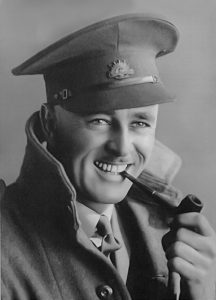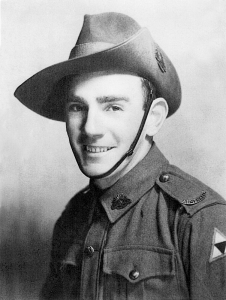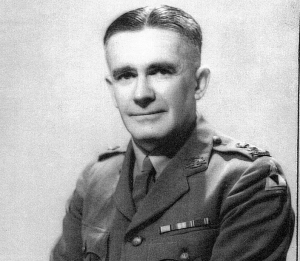‘Don’ Company 2/4th MGB – The following synopsis was prepared by Cheryl Mellor (daughter of Cowboy Matthews) for Fall of Singapore commemorative service held 12th February 2023
POW MEMORIAL, KINGS PARK
30th January Australian troops moved to battle lines.
31st Jan – Causeway blown up.
Sunday 8th February 1942 was a day of intensive and continuous artillery fire and aerial bombing especially around the north west area where 2/20th Btn, Dalforce and 2/4th’s ‘D’ Coy’s 13 Platoon men had dug in. The attack beginning 0100 hours Sunday 8 Feb lasted until 1100 hours that night. WW1 veterans said it was worse than anything they were subjected to in France.
Yamashita’s heavy guns fired 88,000 shells (200 rounds per gun) during 15 hours along the straits, cutting telephone lines and isolating forward units. In comparison 2/4th Vickers machine gun received an allocation of 20,000 rounds of ammunition per gun!
An old gun (probably Boer War) was located in Singapore and an additional 2/4th Platoon was formed. 24 well trained machine gunners including three officers were pulled out of ‘D’ Company’s 4 Platoons. 24 troops plus three Reinforcements formed 16 Platoon under C.O Sgt Arbery, Platoon Sergeant Colevas & L/Cpl Stribley. During the early fighting Stribley was KIA. Arbery & Colevas WIA & evacuated.

Above: Alf Cough
‘D’ Coy Headquarters Company Commanding Officer Major Alf Cough, 2 I/C Capt George Gwynne, C.S.M Sgt Feltham were left with 4-5 troops plus Cook L/Cpl Stewart were located behind the frontline. 13 & 16 Platoons were ordered to report to D Coy HQ if their lines fell. Desperate machine gunners who had fought their way out of the frontline found HQ deserted and instead ran into Japanese.
‘D’ Coy was supporting 22nd Brigade’s 15 kilometre sector of most difficult swampy and sandy coastline under Commanding Officer Brigadier Harold Taylor. The 22nd Brigade had 3 Battalions – 2/18th, 2/19th and 2/20th, hopelessly undermanned with no reserves. The total strength of 22 Brigade’s forward line was 1500 men with 450 in close company reserve. The 1.5 kilometre beach frontage averaged about 10 metre distance between every man.
The results of Japanese targeting HQs and communication lines between Units and to HQs was catastrophic.
Half an hour after the bombardment ceased at 11.30pm wave after wave of thousands and thousands of Japanese troops began crossing the Straits on barges landing on 22nd Brigade’s defence line around Sarabin Beach. The Japanese had closely monitored west coast mapping the weakest spots. The attacking troops easily slipped through wide areas without defence, outnumbered and encircled the troops. The Machine Gunners fought bravely and magnificently until forced to retreat under heavy fire, some gun pits having expended all their ammunition such as Meiklejohn. Many troops found themselves behind the Japanese frontline. Some were captured, most tried to escape, hide or at least hold out. Annear and Bell caught behind Japanese front lines were killed 14th Feb attempting to escape in a boat.
At approximately 1130 hours 13 Platoon Vickers machine gun in No. 1 pit received a near direct hit. 23 year old Pte. Bob Pratt was killed outright, Sergeant Joe Pearce & Corporal Bill Paterson were wounded & evacuated.

Above: Bob Pratt
Pratt’s English born family lived Higginsville near Norseman. Pratt’s family were notified of his death Feb 1942 prior to communications to Australia being shut down.
Attached to 2/20th Battalion, 13 Platoon’s C.O. Lt Eric Wankey supported by Platoon Sergeant Cpl Jacobs, four other Corporals Hunt, Kenney, Paterson & L/Sgt Joe Pearce, 32 Privates and 3 reinforcements. Within hours Wankey & his No 2 Gunner Loller had been WIA, evacuated out with Pearce, Patterson & Beard. (Wankey & Loller would each lose a leg to amputation). Cpl ‘Jake’ Jacobs took over command. Patterson spent months hospitalised recovering from his serious wounds.

Above: Loller
By 15 February, 13 Platoon suffered 4 x KIA – Pratt, Lin MacDonald and Fred Tregenza who had been ambushed getting out of the front line and Sidney Thomas Brown (believed to have enlisted underage) DOW
Fred’s convoy was ambushed and machine gunned. Trucks abandoned, the men scattered and attempted to make their way to 2/20th Battalion Headquarters. Fred was last seen with George Quinn who managed to escape to Sumatra. It is believed Fred was killed somewhere on or near Lim Chu Kang Road.
Fred Tregenza and his brother Jack enlisted same time 1940. Farmers from Dangin, Fred joined 13 Platoon and John known as ‘Jack’ was Sgt in 15 Platoon. Jack died of illness at Brankassi POW on the Burma-Thai Railway in 1943.
12 x WIA
4 Shell-shocked at Hill 200, Ulu Pandan.
Further south of 13 Platoon was 15 Platoon under C.O. John Meiklejohn supporting 2/18th Battalion’s 900 troops from 4 Rifle Companies under C.O Varley (including a large number of inexperienced reinforcements who arrived on ‘Aquitania’ with 2/4th).
Meiklejohn was KIA with several of his men including Solly and John MacDonald fighting their way of the coast at Sarimbun Beach. 15 Platoon’s 37 troops suffered the most deaths and wounded in ‘D’ Platoon.
Popular Sgt ‘Jack’ Solly was a miner at Murrim Murrim with his two brothers when he enlisted 1940. English born John MacDonald didn’t know his father was ordered to be ‘Shot at Dawn’ by England’s Army WW1.
Caught behind Japanese lines Anear & Bell were killed trying to leave on a boat several days later. John MacDonald, Meiklejohn, Solly, Syd Reid, Robert Rouse, Taylor and Donald Moir were KIA in and around the coast.
Pingelly boy Rouse was captured and killed whilst trying to escape.
Whitford & Thorpe were killed by the same shell at Buona Vista KIA on 15 Feb,.
Bob was born 1903 Princess Royal Mine, near Norseman. He was a miner/prospector at Kalgoorlie when he enlisted.
English born 25 year old milk carrier Jim Thorpe of Gosnells came to WA as a 12 year old to live with older sisters as his mother had died.
Total 11 men KIA
12 x WIA
Bluey Semple escaped to Sumatra
3 x Shell shocked Ulu Pandan
Leadbitter was captured, returned to unit at Changi.
Further south from 15 Platoon was ‘D’ Company No. 14 & 16 Platoons supporting 2/19th Battalion whose CO Lt/ Col Oakes had replaced Lt-Col Anderson VC who was ill. Their location was from the Murai to Berih (Sungei) River and Choa Chu Kang Road. The mouth and estuaries provided an excellent opportunity for deep penetration by Japanese landing craft giving access to Tengah Airfield and the ability to attack the rear of 22nd Brigade. The area is best described as a tidal basin a kilometre wide from north to south and twice that in length.
16 Platoon was located on the exposed north headland of Tanjong Skopec with two guns sited on the water’s edge and a third 350 metres east covering a huge area without any supporting infantry. C.O Ron Arbey and 2 I/C Des Colevas were WIA.
Ordered to fall back to Bn HQ 16 Ptn found ‘D’ Coy HQ deserted and ran into strong Japanese concentrations. Under attack they were forced to scatter into small groups. Destroying their guns they tried to make their way back to Australian lines.
By 15 Feb 16 Platoon had 9 men KIA –
1) Midland boy Lt/Cpl A.W. ‘Bert’ Stribley was KIA 9 Feb, married with 2 young sons. Transf from D Coy HQ to 16 Ptn. Enlisted 1940 with brother Norman Stribley who joined 13 Platoon (was shell shocked at Ulu Pandan). Norm was recovered from Thailand having worked around Hellfire Pass with D Force S Battalion.
2) Joseph Barrass KIA 11 Feb Tanjong Murai aged 29 years (his party scattered under heavy fire) had been working as a Hoist Driver at Marble Bar.
3 & 4) Reg Brown & Maurice Browne managed to leave the coast were KIA at Lim Chu Kang Road. Reg Brown aged 18 years was formerly a bootmaker.
Ballarat born Maurice Browne came to WA with his parents. Father to two children, his marriage had broken down. He was working as a truck driver at Meekathara. He left his fob watch with his wife, which his children proudly possess today.
5) 42 year old Tom Edwards KIA Hill 200, Ulu Pandan 12 Feb. English born Tom was father to two children. 1922 he came to WA from England aged 23 year with wife They took up land with the Busselton Group Settlement scheme. Pte. T.H. Edwards served WW1 with The Lancashire Fusiliers.
6) Newly married Ellis Shackleton was believed WIA or KIA when his crew tried to escape West Coast.

7) WW1 Veteran, 49 year old William ‘Billy’ Stuart was KIA Lim Chu Kang Road. WIA with 16th Battalion AIF at Gallipoli. WIA Hill 63 Messines Ridge and awarded a Military Medal for his actions at Proyart with 48th Batallion, 1918.
8) 6’ tall, 22 year old Fremantle born ‘Laurie’ Taylor KIA Tanjong Kurai. He had worked as a civil servant. His parents resided Beaconsfield.
9) Reinforcement and Wagin boy 21 year old Fitter’s Assistant, Ron Ellis received GSW arm & chest. He died following an arm amputation on 13 Feb.
3 x WIA
3 Shell shocked
WX7745 Bernard G Harrison did a runner, left Singapore civilian ship
Richard Annear (brother to Dudley) escaped Sumatra
Thomas Ashton Wood escaped to Java
John Wilson MIA 8 Feb, returned to his unit Changi
About 8 men to march to Changi 16 Feb.
By 0300 the Japanese had poured through the space between 2/18th and 2/19th near the mouth of Sungei River – Singapore’s defenders all along the coastline were engaged with hand to hand fighting. The continual build up of Japanese left the Australians fighting for survival.
14 Platoon supported 2/19th and was led by C.O. Lt Tomkins supported by Sgt Skinner, Cpl Horn Cpl Wells. 36 men from 2/4th located further inland from 16 Platoon at head of Sungei River with 2/19th’s ‘A’ Coy. Not yet committed they were ordered to withdraw to the south-eastern corner of Tengah Aerodrome. By 0600 they had moved east along Choa Chu Kang road and took up position alongside 2/29th Btn (Brigade Reserve). Cpl Horn was taken prisoner by Japanese and returned to Battalion at Changi.
By this time the whole of Brigade 22 sector was occupied to some degree by the Japanese concentrating in force on the main Lim Chu Kang road and around Ama Ken Village. Evacuating wounded became a matter of running the gauntlet. Trucks packed to capacity were attacked by Japanese troops and strafed by aircraft. Some vehicles arrived with additional casualties and some were never seen again.
Les Cody wrote in ‘Ghosts in Khaki’ P.157 “The confusion existing behind the Australian lines after the first onslaught by the Japanese was extensive, traumatic and inevitable. The forward defences were little more than isolated pockets of platoon strength or less and as these were overwhelmed or by-passed by the Japanese they were further fragmented.”
Compounding these problems was the constant forced relocation of command HQ. There were continuing breakdowns in communications. Orders were misinterpreted, lost and units left behind. Orders lost relevance and purpose by the time of delivery. Relaying of orders was virtually limited to word of mouth and use of Despatch riders – easily lost or KIA.
There was no possibility of an organised withdrawal and it was only as survivors began to filter through that any attempt to regroup was possible.
This disarray continued as further Platoons and Battalions were subjected to Japanese attacks.
On 9th Feb 2/18th, 2/20th and 2/29th as well as ‘D’ Company fought all morning to keep Tengah Airfield falling into Japanese Hands. With the Lim Chu Kang Road defence line collapsing, Taylor at 1pm, orders a withdrawal to Jurong Road. The Japanese had full control by late afternoon.
Thursday 10 Feb Brig Taylor’s troops are still holding the Kranji-Jurong Line. Taylor supposedly misreads Percival’s secret emergency orders sent the previous night. These orders have been edited by Bennett and passed on. Taylor mistakes the orders to move immediately to Singapore’s perimeter defence positions – withdraws his troops from the northern sector. The Japanese immediately take possession. The southern extremity of this Kranji-Jurong Line is held by 44th Indian Brigade.
The next day, 11th Feb the 44th Indian Brigade come under heavy air and artillery bombardment and clash with Japanese troops. Suddenly the Indians are in full flight – unable to be controlled by officers. Later that afternoon, they are reported to be at Pasir Pamjang Village on south- west coast – 4 miles further south than where they should be. 44th’s CO Brig. Ballentine finally regains control of his men bringing back to Ulu Pandan Road.
The Kranji-Jurong Line has virtually been given to the Japanese.

Above: Lt Col Anketell
12 Feb – Lt Col Anketell has taken control of about 400 men from 2/4th at Ulu Pandan. At Hill 200 they find themselves tied down under hours and hours of heavy artillery.
A noticeable number of ‘D’ Coy troops suffered shell-shock at Hill 200, Ulu Pandan.
Hill 200 was costly to 2/4th.
41 men KIA or DOW including Lt. Col Anketell.
13, 14th & 15th Feb – All troops retreat to hold Singapore city for the final battle.
